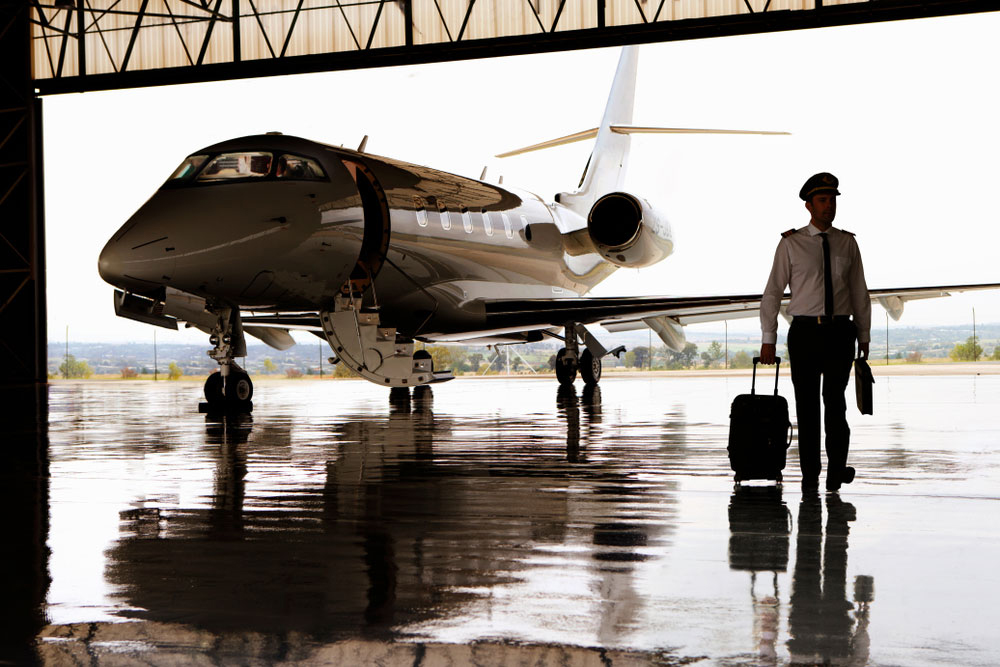Safety should be a high priority when purchasing a private jet, even more so than luxury, convenience, speed, or range. While private aviation already offers a high degree of control over your travel environment, everything from onboard technology to maintenance practices, pilot training, and insurance coverage influences how safe your trips are.
Ingram Aviation Insurance knows safety is always a wise investment. Here’s how to choose the safest private jet and ensure your aircraft stays protected long after purchase.
Top Safety Features to Check Before You Buy
Today’s top-tier jets come equipped with advanced technology to assist pilots and protect passengers. Whether you’re in the market for a light jet or an ultra-long-range aircraft, look for the following features.
- Enhanced vision systems: Using infrared cameras and heads-up displays, EVS helps pilots see through poor visibility conditions like fog, rain, and night operations.
- Synthetic vision technology: This 3D rendering system gives pilots a virtual view of terrain, obstacles, and runways, reducing the risk of controlled flight into terrain.
- Automatic emergency descent mode: This system automatically lowers the aircraft to a breathable altitude in the event of cabin depressurization, buying time for passengers and crew.
- Traffic collision avoidance systems: TCAS alerts pilots of nearby aircraft and provides instructions to avoid midair collisions.
- Fly-by-wire systems: These electronically controlled flight systems increase stability, reduce pilot workload, and incorporate built-in protections to prevent unsafe maneuvers.
Examples of High-Safety Private Jets
While many private jet manufacturers build with rigorous safety standards, the following models have received recognition for their robust safety features and engineering.
- Gulfstream G700: Known for advanced avionics, predictive landing performance, and the PlaneView™ flight deck.
- Dassault Falcon 8X: Features digital flight controls and a triple-redundant flight system.
- Bombardier Global 7500: Offers advanced diagnostic monitoring and redundant safety systems.
- Pilatus PC-24: A rugged light jet with built-in short takeoff and landing capability and robust avionics for off-runway operations.
- Cessna Citation Latitude: Includes Garmin G5000 avionics and a track record of reliability in the midsized jet category.
The Importance of Maintenance and Crew
Even an aircraft with all the bells and whistles will become risky if you ignore proactive upkeep. Follow a regular maintenance schedule and comply with FAA-mandated inspections to keep your jet airworthy.
- Work with certified maintenance teams familiar with your aircraft’s make and model.
- Log all inspections and repairs, and keep documentation organized and up to date.
- Monitor service bulletins and airworthiness directives issued by manufacturers or regulatory agencies.
Pilot and crew experience is equally crucial. Flight crews should receive regular training, meet insurance-mandated minimums, and complete simulator-based proficiency checks to stay prepared for routine flights and emergencies.
Third-Party Audits
Voluntary third-party audits go beyond regulatory requirements to evaluate:
- Operational procedures
- Crew training programs
- Aircraft maintenance history
- Emergency response plans
Reputable auditors include ARGUS, WYVERN, and the International Standard for Business Aircraft Operations. Earning these safety certifications adds credibility and can lower your insurance premiums.
Insurance in Aviation Safety
While maintenance, audits, and training reduce risk, no operation is immune to accidents or unforeseen incidents. That’s why a comprehensive aviation insurance policy is an essential part of a responsible safety strategy.
At Ingram Aviation Insurance, we provide tailored policies that cover:
- Liability insurance to protect against property damage or bodily injury
- Hull insurance to repair or replace your aircraft in the event of damage
- Crew coverage for medical expenses and legal defense
- Third-party liability for charter operators or shared-use agreements
We also work directly with underwriters to account for your aircraft’s safety features, pilot qualifications, and maintenance history, helping you get the best possible terms and coverage.
Fly Smarter With Ingram Aviation Insurance
Buying a private jet is a significant investment, and safety should never be a secondary consideration. Create a complete safety ecosystem by choosing a model equipped with cutting-edge technology, hiring experienced crew, committing to routine maintenance, and securing proper insurance.
Ingram Aviation Insurance’s expertise means we understand the unique demands of aircraft ownership and offer the comprehensive guidance you need to feel secure.
Contact us today to review your current coverage or explore policy options for your next aircraft purchase. In private aviation, safety isn’t a feature; it’s a foundation.

